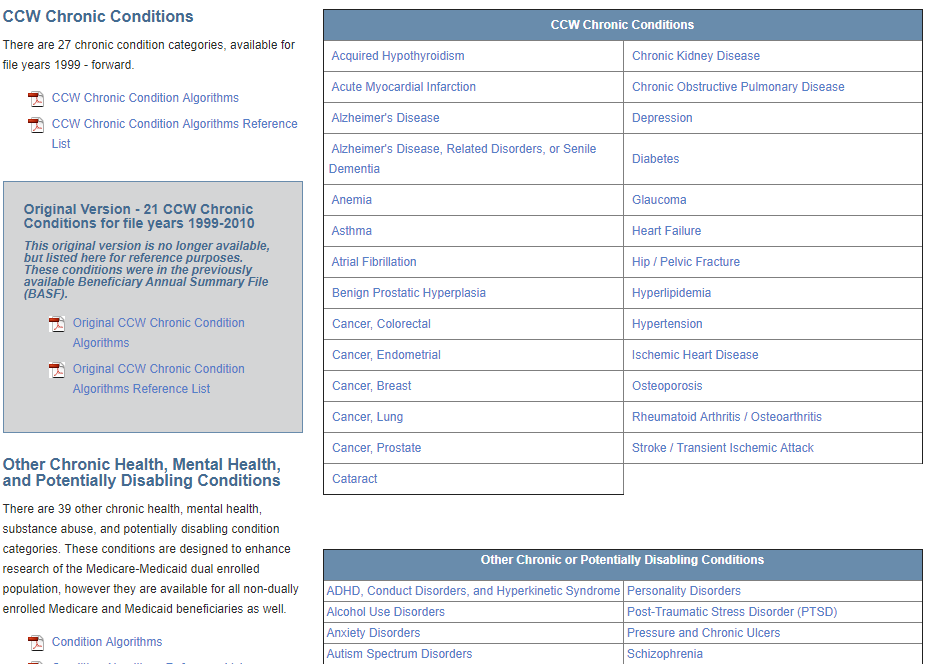In efforts to build phenotype library (in addition to PheKB), it would be interesting to replicated ResDAC phenotypes defined here
https://www.ccwdata.org/web/guest/condition-categories
We use VRDC platform and use those flags all the time and to make comparable analysis in OHDSI network, having them as OHDSI cohort would be very powerful.
For example, for OPIOIDS, there are nice valuesets defined here
https://www.ccwdata.org/documents/10280/19139421/other-condition-algorithms-and-reference-list-opioids.pdf
We could even compare if we get same results using mapped HCPCS procedure-drugs vs. CCW query using original source_values.
list of some examples


